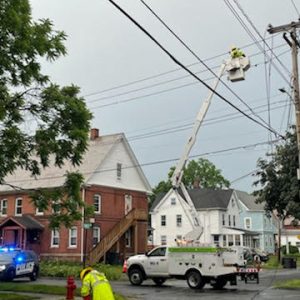WESTFIELD – The Westfield Gas & Electric Department has weathered a storm, although this one is occurring without precipitation of any kind.
The storm is related to the current worldwide financial situation which has resulted in a decrease in bond ratings for nations, making it much more expensive to borrow money. The WG&E uses bonds to fund capital equipment purchases and plant improvement projects, such as replacing aging gas lines throughout the city.
The municipal utility has been notified that its bond rating, elevated from A to A+ in February of 2010, has been extended following a recent financial review by Standard & Poor’s credit rating assessment division.
Chief Financial Officer Andrew Banas said S&P’s rating services division evaluated the department’s financial practices and “indicated that the WG&E’s current situation is very good relative to the majority of (power) distribution companies, particularly considering the difficult economic times.”
Banas, reporting at the Municipal Light Board meeting Wednesday, said that the utility’s “metrics for debt coverage remain strong and the liquidity position in general is very strong” and that the department is “well positioned to deal with bumps in the road.”
S&P cited both strengths and weaknesses in its reaffirmation of the utility’s bond rating, noting that the WG&E’s electric rates “exhibited more than a 10 percent advantage over” the average electric rate in the state.
S&P’s report also cited a financial “cushion” provided by the department’s unrestricted cash and investments, resources sufficient to cover operating expenses for more than five months.
Banas said that S&P did cite specific concerns about the WG&E business model, in particular its dependence on electrical power produced by nuclear plants, especially the potential liability associated with nuclear power generation.
Banas said the fact that WG&E purchases 53 percent of its total power from the Seabrook and Millstone projects creates large fixed commitments to pay portions of those facility’s debt service.
“The fact that we draw from just two plants is a concern for them,” Banas said. “If it was across four or five plants, it might not be as much a concern.”
S&P, because of the volatile global financial situation, is conducting annual rate reviews and will examine the department’s status again in 2012, Banas said.







